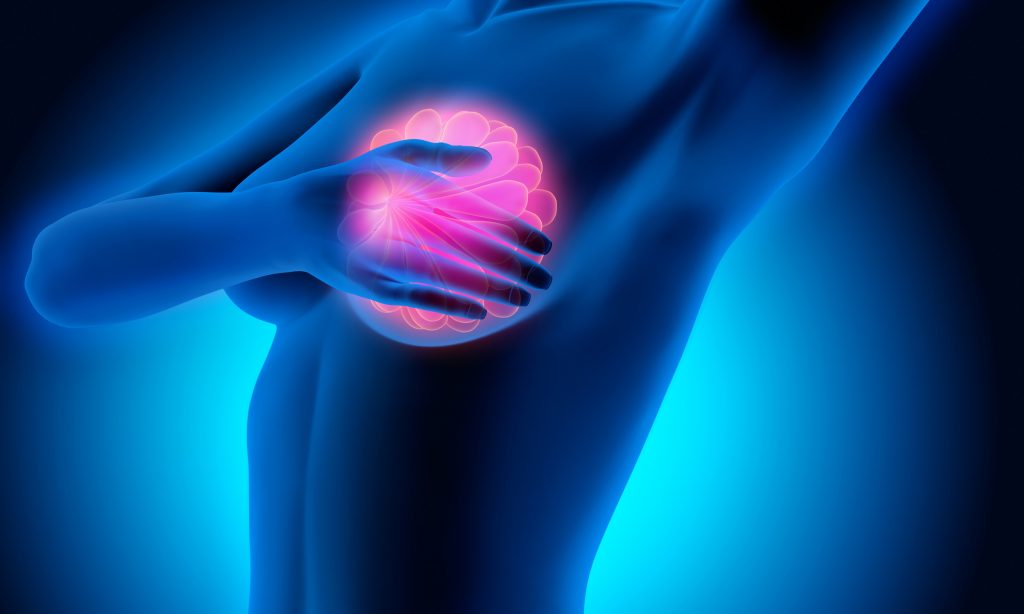A new study recently published on NPJ breast cancer has found that end-of-treatment cell-free circulating tumor DNA (ctDNA) is detectable in one-third of triple-negative breast cancer patients with residual disease after neoadjuvant systemic therapy and that ctDNA status and residual cancer burden are independently prognostic in this setting.
Neoadjuvant systemic therapy is commonly employed in triple negative breast cancer patients and residual disease after the therapy is associated with a high risk of recurrence and death; tools to further stratify the risk of recurrence in patients with residual disease can optimize the utilization of available adjuvant therapy. One of these risk-stratifying tools is the residual cancer burden classification, that quantitates the extent of residual disease in the breast and axillary lymph nodes following neoadjuvant chemotherapy, another is detectable ctDNA. Assessing the combined impact of both is of interest, so authors identified 80 triple-negative breast cancer patients enrolled in a prospective multisite registry with residual disease and plasma sample for ctDNA analysis. Investigators detected ctDNA in 33% of triple-negative breast cancer patients with residual disease after neoadjuvant systemic therapy. «End-of-treatment ctDNA status is highly prognostic and it’s associated with residual cancer burden class, though these two biomarkers provide complementary but not completely overlapping prognostic information», authors say. «These findings, if confirmed in additional studies, could provide insights into the role of ctDNA in identifying patients who are most likely to benefit from adjuvant treatment intensification. Because of the complementary prognostic information provided by residual cancer burden class and ctDNA status, we suggest that future residual disease adjuvant therapy trials for triple-negative breast cancer patients consider both biomarkers for patient selection/stratification, for a better prognostication than either biomarker alone», authors conclude.

A new study recently published on NPJ breast cancer has found that end-of-treatment cell-free circulating tumor DNA (ctDNA) is detectable in one-third of triple-negative breast cancer patients with residual disease after neoadjuvant systemic therapy and that ctDNA status and residual cancer burden are independently prognostic in this setting.
Neoadjuvant systemic therapy is commonly employed in triple negative breast cancer patients and residual disease after the therapy is associated with a high risk of recurrence and death; tools to further stratify the risk of recurrence in patients with residual disease can optimize the utilization of available adjuvant therapy. One of these risk-stratifying tools is the residual cancer burden classification, that quantitates the extent of residual disease in the breast and axillary lymph nodes following neoadjuvant chemotherapy, another is detectable ctDNA. Assessing the combined impact of both is of interest, so authors identified 80 triple-negative breast cancer patients enrolled in a prospective multisite registry with residual disease and plasma sample for ctDNA analysis. Investigators detected ctDNA in 33% of triple-negative breast cancer patients with residual disease after neoadjuvant systemic therapy. «End-of-treatment ctDNA status is highly prognostic and it’s associated with residual cancer burden class, though these two biomarkers provide complementary but not completely overlapping prognostic information», authors say. «These findings, if confirmed in additional studies, could provide insights into the role of ctDNA in identifying patients who are most likely to benefit from adjuvant treatment intensification. Because of the complementary prognostic information provided by residual cancer burden class and ctDNA status, we suggest that future residual disease adjuvant therapy trials for triple-negative breast cancer patients consider both biomarkers for patient selection/stratification, for a better prognostication than either biomarker alone», authors conclude.